Make a simple DIY face mask that unclogs pores and leaves your skin glowing. I’ll show you how to make a clay mask (and 6 variations) using bentonite clay, kaolin clay, French green clay, or rose clay.
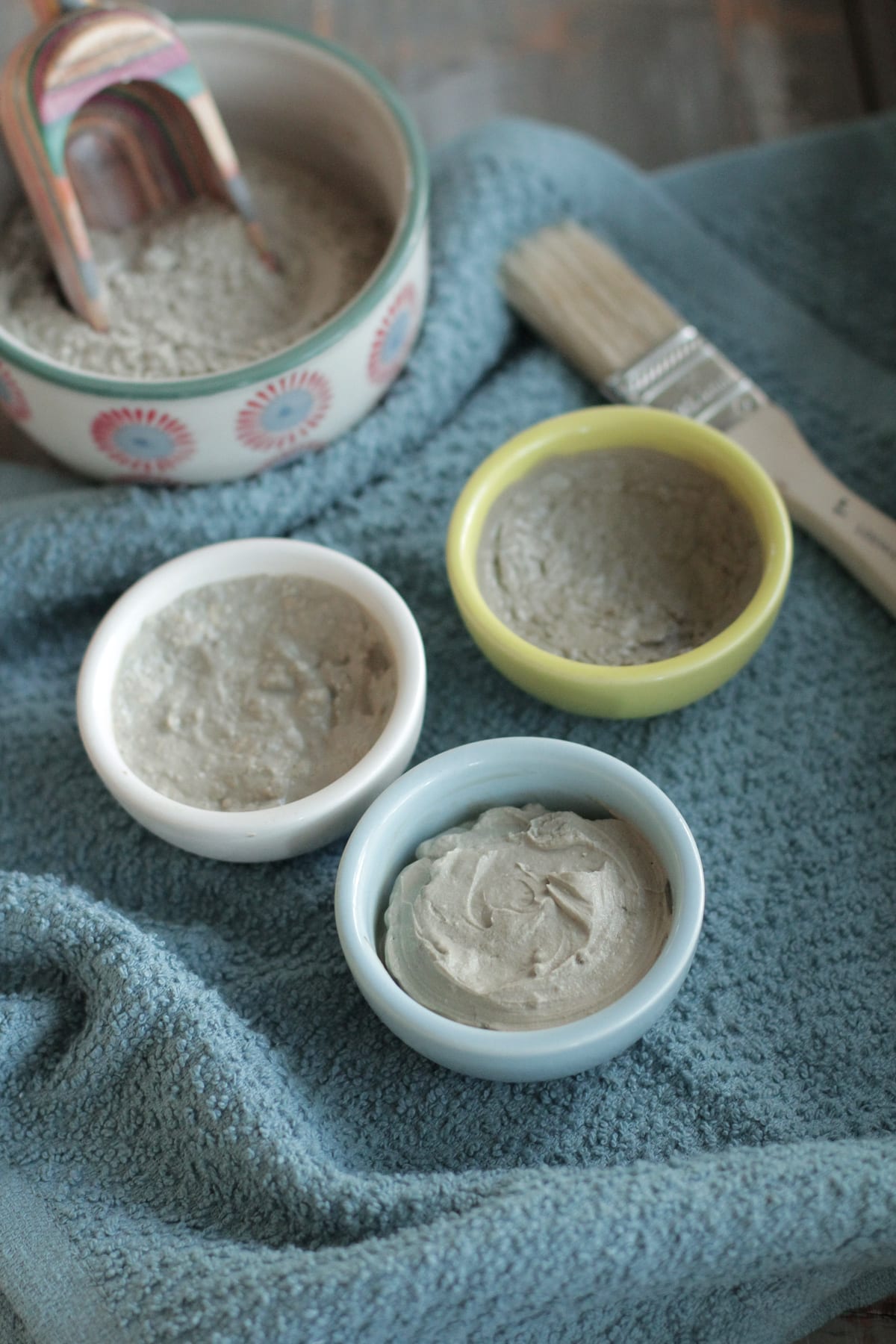
Want to Save This Article?
Enter your email & I’ll send it straight to your inbox. And you’ll get new recipes & tips each week.
Homemade Clay Mask Benefits
- Natural Ingredients – Make your own face clay mask without hash ingredients. Instead, use simple ingredients for your skin, like clay, honey, yogurt, oats, and charcoal.
- Cheap – Making your own “mud masks” or clay masks at home is a great way to save money on beauty products. The DIY recipes in this article use cheap, easy-to-find ingredients.
- Tighter Pores – You can’t shrink pores, but you can clean your pores and remove gunk and debris that makes pores more visible. Homemade clay masks are a great way to do this.
- Absorb Oil and Bacteria – If you struggle with acne, using a clay mask once a week may be beneficial. A clay mask may remove impurities and prevent future breakouts (source).
- Customize For Your Skin – Make an essential mask with basic ingredients (just clay and water), or customize your own mask to meet your skincare needs by adding yogurt, honey, oats, or an essential oil to the clay.
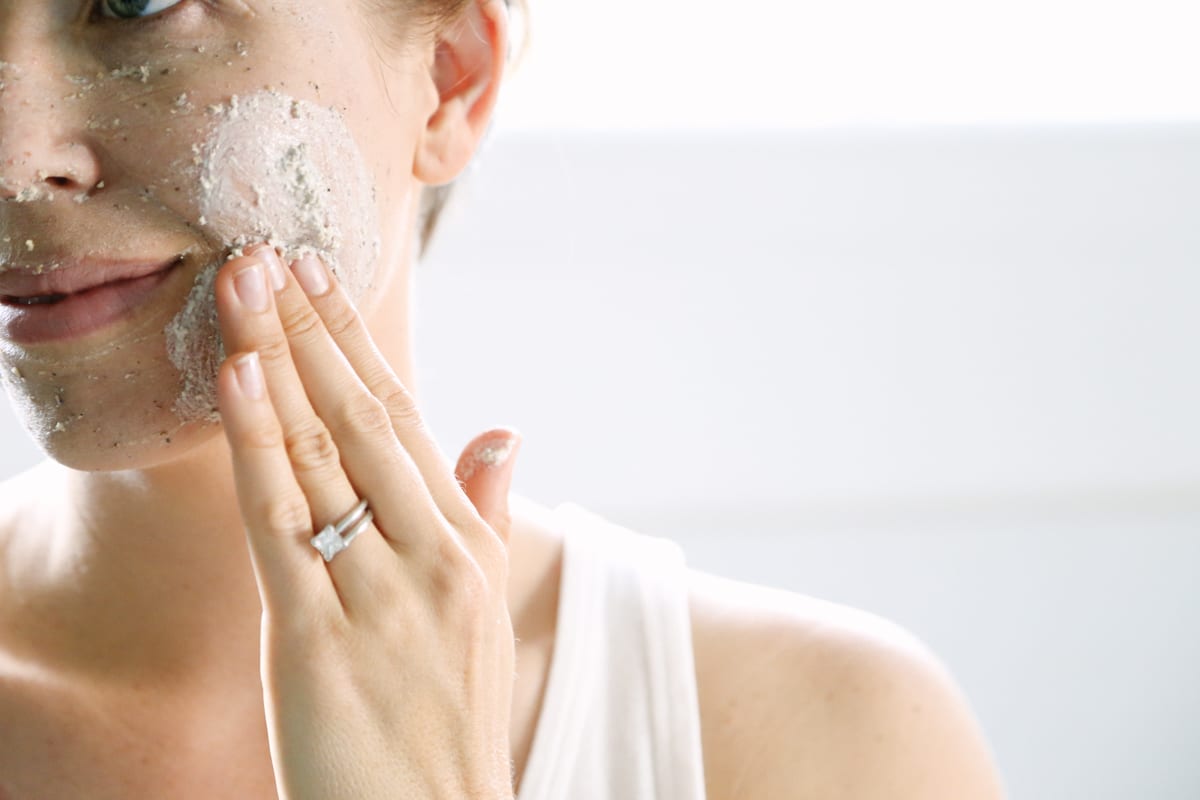
What’s the Best Type of Clay for a Face Mask?
Several different types of clay may be used to make a face mask. These are the best cosmetic clays for making natural clay face masks at home.
- Bentonite Clay – My go-to clay for most skincare recipes. This clay has an electrical charge, which allows it to absorb toxins. Metal tools shouldn’t be used when working with bentonite clay. Great for oily skin types.
- White Kaolin Clay – A gentle white-colored variety of clay known for deep cleansing and exfoliating. Suitable for all skin types.
- French Green Clay – A green clay that’s mined from naturally occurring deposits in France. It’s known for its toning properties and detoxifying properties. It also helps stimulate blood flow on the skin as it dries. Suitable for all skin types.
- Rose Clay (AKA: Pink Kaolin)- A dusty, rose-colored clay that gets its color from its iron oxide content. A gentle clay that can gently cleanse, exfoliate, and reduce inflammation. Suitable for all skin types.
6 DIY Clay Mask Ideas To Make at Home
All of these easy recipes are a one-time use DIY project.
Choose the clay face mask recipe that best fits your skincare needs. They do not have a shelf life, so you’ll need to mix up your preferred mask just before applying it to the skin. Use any clay desired (as talked about above).
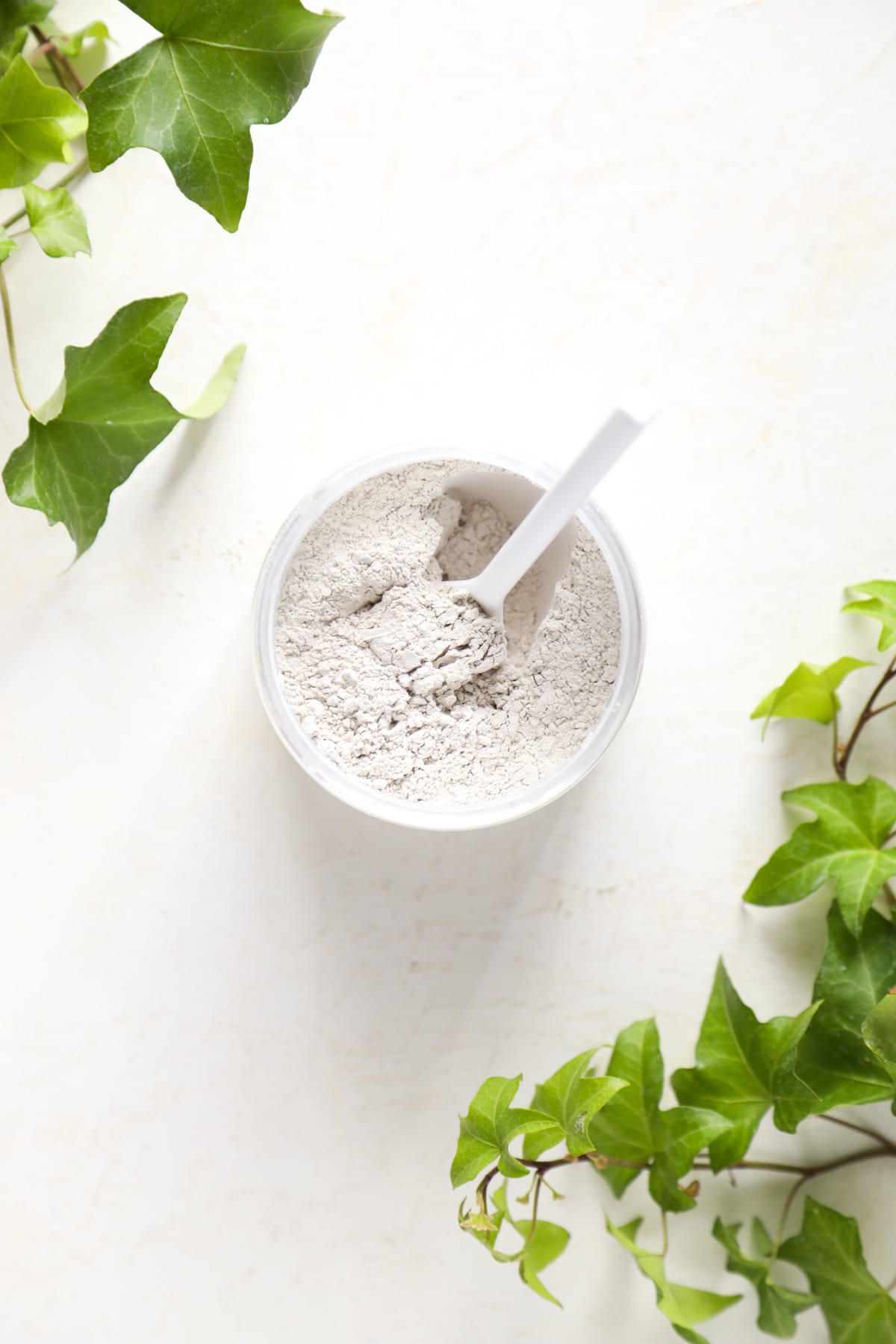
Recipe 1: Basic Clay Mask
Benefits – Detoxifies pores, exfoliates, and cleanses the skin.
Ingredients & Instructions
- 1/2-1 tablespoon clay of choice: White Kaolin Clay, Rose Clay, French Green Clay, or Bentonite Clay
- 1 tablespoon water
- Combine ingredients in a small bowl.
- Apply a thin layer to the face and neck using fingers or a brush.
- Wait 5-15 minutes for the clay to dry.
- Rinse with a warm washcloth to remove the mask from the face, rinsing the cloth and wiping the face as needed until entirely removed.
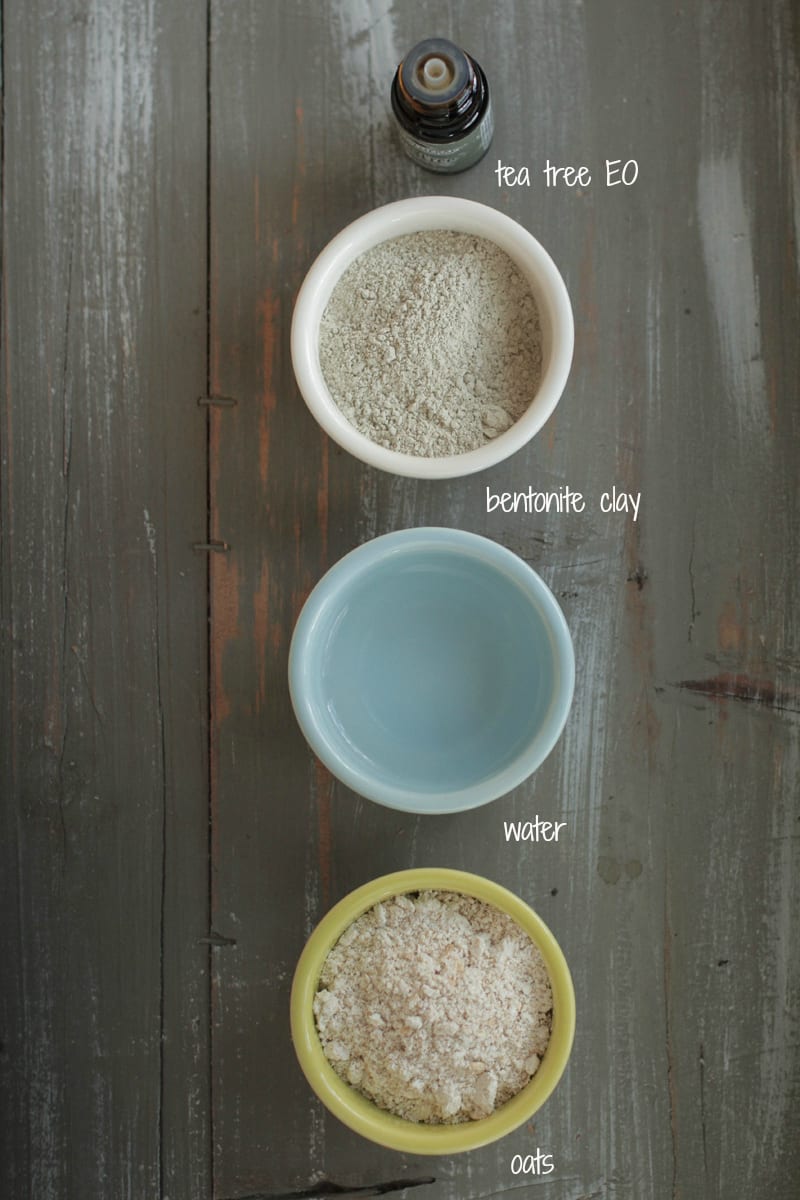
Recipe 2: Oat & Clay Mask
Benefits – Adding oats to your clay mask is a good option if you want to add a bit of exfoliation and reduce inflammation.
Ingredients & Instructions
- 1 tablespoon clay of choice: White Kaolin Clay, Rose Clay, French Green Clay, or Bentonite Clay
- 1-2 tablespoon water
- 1 tablespoon ground oats (buy oat flour from the grocery store or grind 1 tablespoon rolled oats in a spice grinder for a few seconds)
- 1 drop tea tree essential oil (optional)
- Combine ingredients in a small bowl.
- Apply a thin layer to the face and neck using your fingers, massaging the mask on the skin as you apply for exfoliation benefits.
- Wait 5-15 minutes for the clay to dry.
- Rinse with a warm washcloth to remove the mask from the face, rinsing the cloth and wiping the face as needed until entirely removed.
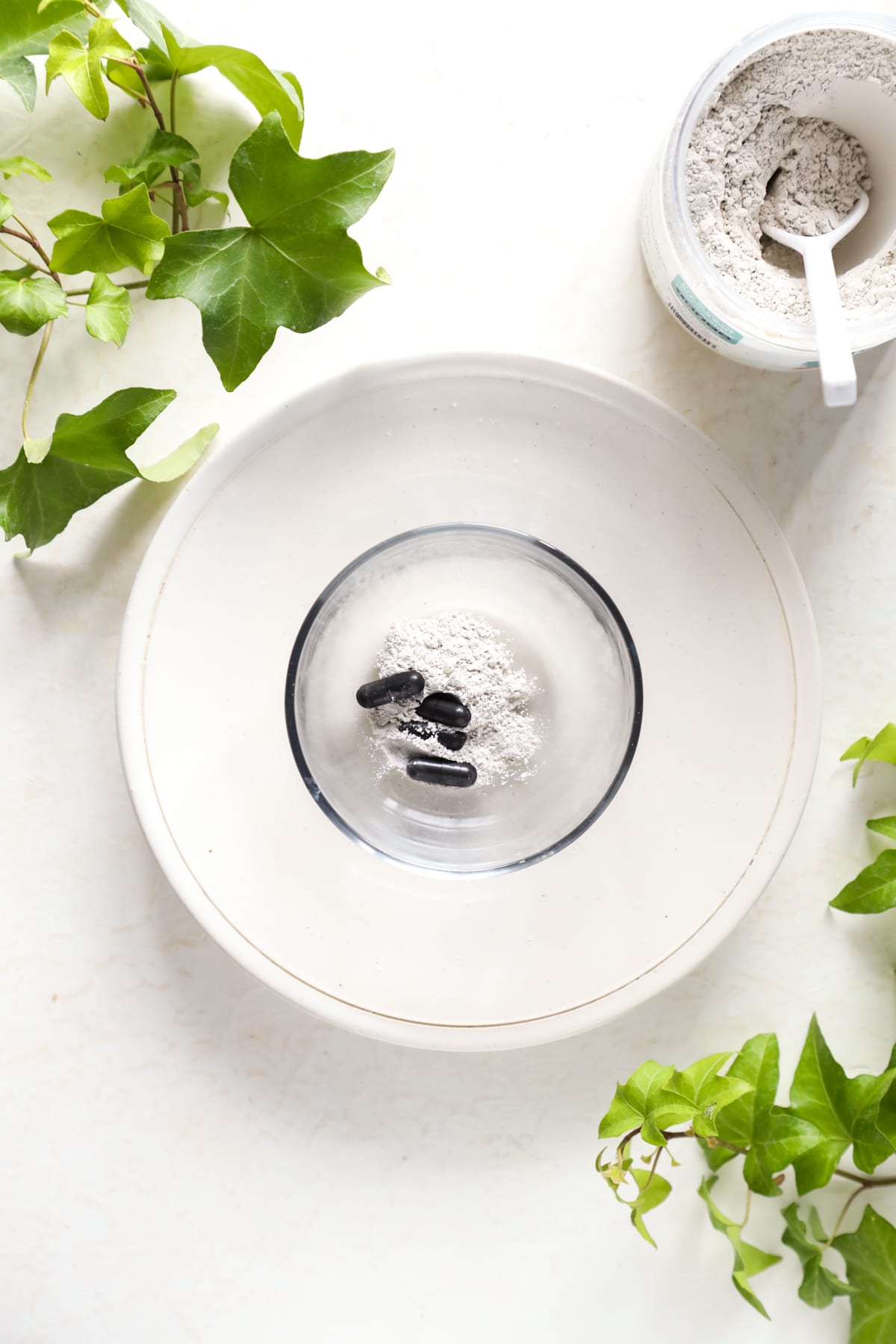
Recipe 3: Charcoal & Clay Mask
Benefits – Activated charcoal is a natural remedy for detoxifying food poisoning. This natural ingredient (easily found at any grocery store in the supplement/vitamin aisle) is excellent for acne, soaking up excess oil, and may even improve dark spots (source).
Ingredients & Instructions
- 1/2 tablespoon clay of choice: White Kaolin Clay, Rose Clay, French Green Clay, or Bentonite Clay
- 1 capsule activated charcoal (about 1/4 teaspoon of powder)
- 1 tablespoon water
- Combine ingredients in a small bowl.
- Apply a thin layer to the face and neck using your fingers.
- Wait 5-15 minutes for the clay to dry.
- Rinse with a warm washcloth to remove the mask from the face, rinsing the cloth and wiping the face as needed until entirely removed. Use a dark washcloth, as the charcoal will stain white.
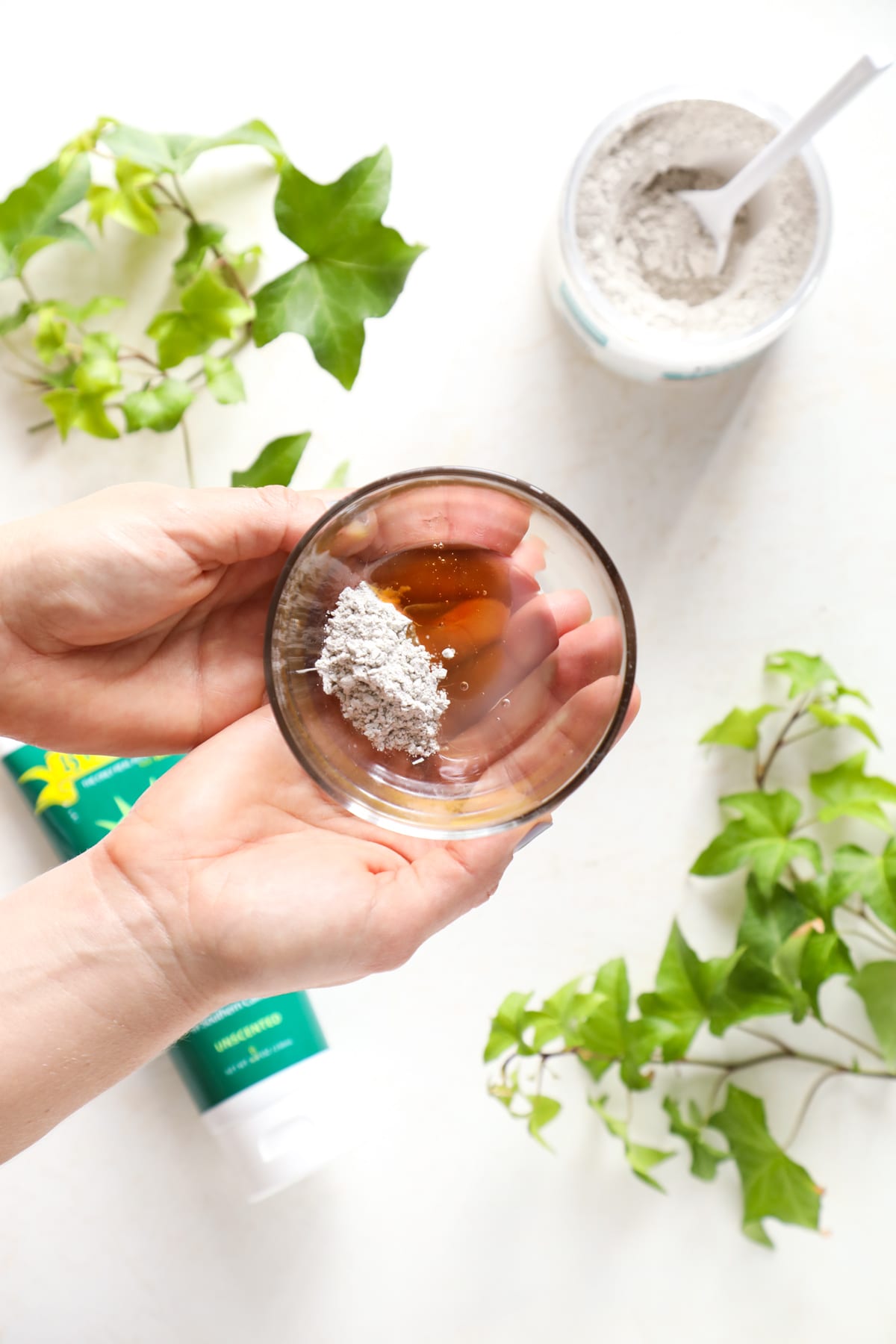
Recipe 4: Aloe Vera, Honey & Clay Mask
Benefits – Honey and aloe vera gel are a great addition to acne-prone skin. Honey and aloe vera gel are soothing. Honey is an exfoliator; it helps balance the bacteria on your skin and can speed up the “healing process” (source).
Ingredients & Instructions
- 1 tablespoon clay of choice: White Kaolin Clay, Rose Clay, French Green Clay, or Bentonite Clay
- 1 tablespoon water
- 1 tablespoon raw honey
- Combine ingredients in a small bowl.
- Apply a thin layer to the face and neck using fingers or a brush.
- Wait 5-15 minutes for the clay to dry.
- Rinse with a warm washcloth to remove the mask from the face, rinsing the cloth and wiping the face as needed until entirely removed.
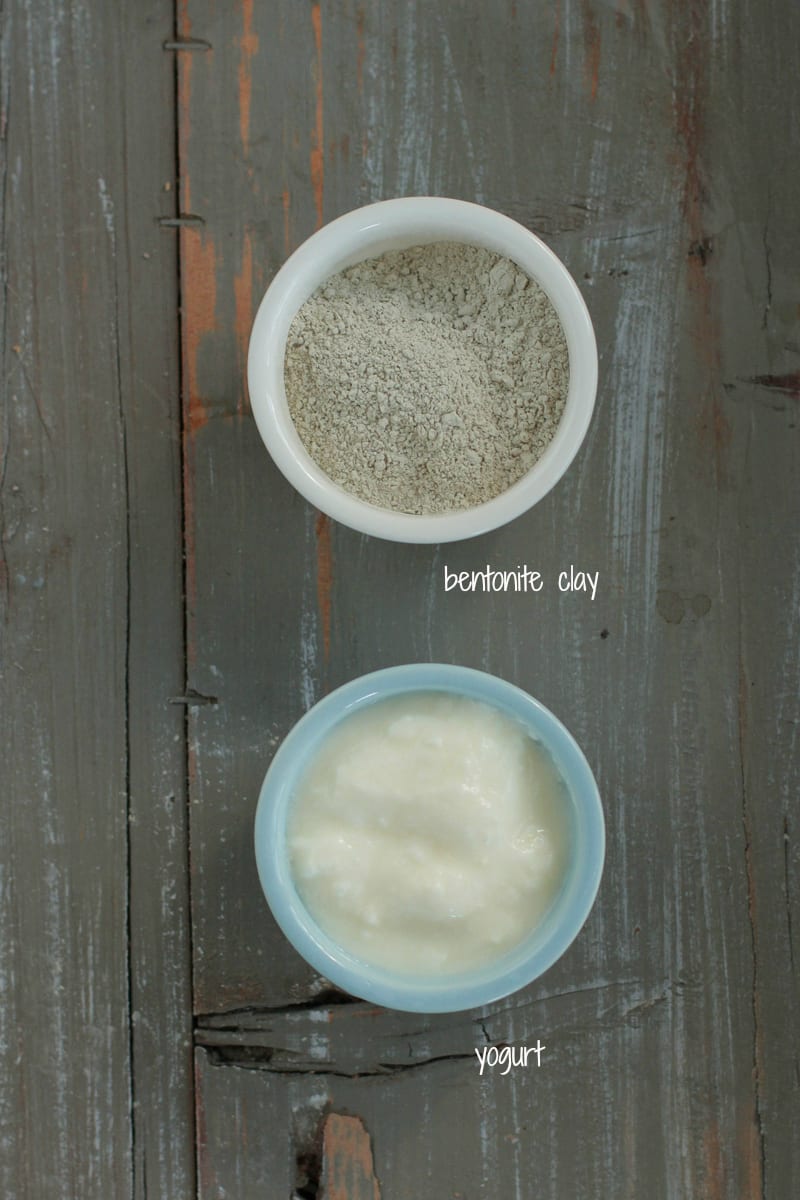
Recipe 5: Yogurt & Clay Mask
Benefits – Yogurt provides fatty acids, beneficial bacteria, and vitamins and minerals which can soften the skin and provide a glowy, rejuvenated appearance.
Ingredients & Instructions
- 1/2 tablespoon of clay of choice: White Kaolin Clay, Rose Clay, French Green Clay, or Bentonite Clay
- 1 tablespoon of plain (unsweetened) yogurt
- Combine ingredients in a small bowl.
- Apply a thin layer to the face and neck using fingers or a brush.
- Wait 5-15 minutes for the clay to dry.
- Rinse with a warm washcloth to remove the mask from the face, rinsing the cloth and wiping the face as needed until entirely removed.
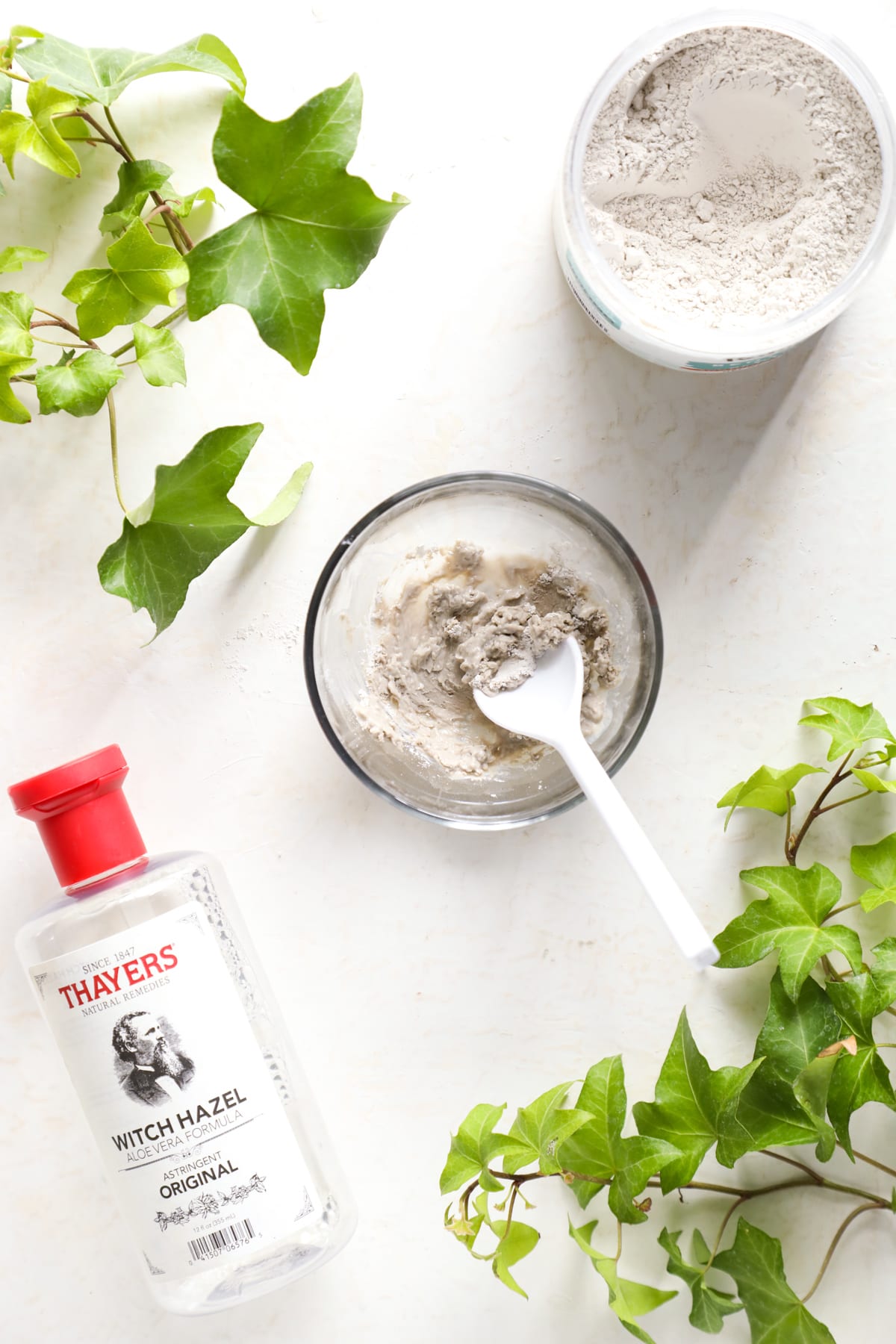
Recipe 6: Clay & Witch Hazel
Benefits – Relieve inflammation, reduce skin irritations, fight acne (source)
Ingredients & Instructions
- 1/2-1 tablespoon clay of choice: White Kaolin Clay, Rose Clay, French Green Clay, or Bentonite Clay
- 1 tablespoon of witch hazel
- Combine ingredients in a small bowl.
- Apply a thin layer to the face and neck using fingers or a brush.
- Wait 5-15 minutes for the clay to dry.
- Rinse with a warm washcloth to remove the mask from the face, rinsing the cloth and wiping the face as needed until entirely removed.
Reader Reviews
The mask worked well for me. Thank you. -Marnus
I love the oat and clay mask recipe. Thank you so much for sharing it! I think the oatmeal really soothed the usual irritated feeling I get with a clay mask. -Aleasha
Expert Tips
- Prep Face – Wash your face with a natural face wash to clean and prepare the skin before applying a clay mask.
- Moisturize – After making, follow up with a hydrating moisturizer.
- Prevent Drying – If the mask dries too quickly, mist your face with water or witch hazel (using a spray bottle) to moisten the mask and prevent it from flaking and over-drying.
- Multiple Applications – The recipes make enough for one-time use. You can make multiple applications and store in an airtight container for up to 2-3 days. For the yogurt and oatmeal mask (since they contain food ingredients), you’ll need to store the extra mask in the fridge for up to 3 days.
FAQs
- How long should I wear a clay mask? 5-15 minutes depending on the sensitivity of your skin.
- Can I add essential oils to a clay mask? Yes, you can. I love lavender essential oil for its calming properties or tea tree essential oil when breaking out. Choose an essential oil that works best for your skin needs. A little essential oil goes a long way, so you only need a drop or two.
- Can you make DIY face masks without clay? Yes, you can. I love using yogurt and honey or just yogurt. Yogurt is a fantastic face mask ingredient that exfoliates the skin.
- Does clay contain heavy metals? Clay is naturally found in the earth and may include some metals. If this concerns you, I recommend researching companies and sourcing before purchasing clay.
- What should I apply on my face after using a clay mask? Wait a few minutes for your skin’s pH to balance, then apply a natural moisturizer.
- Do I need to remove makeup or wash my face before applying a clay face mask? Yes, always remove makeup and wash your face with a good cleanser before applying a mask.
More Homemade Face Masks
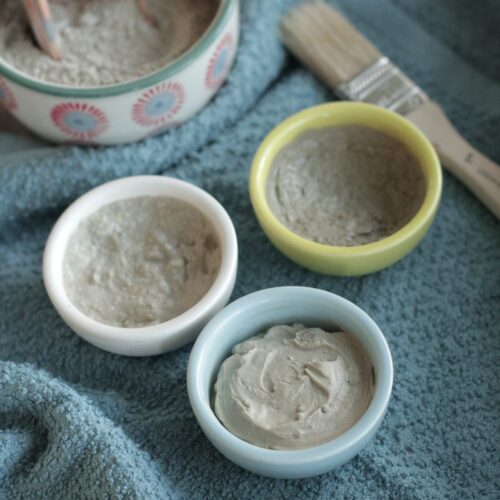
Basic Homemade Clay Mask Recipe
Equipment
- 1 small bowl
Ingredients
- 1/2-1 tablespoon clay of choice such as: bentonite clay, kaolin clay, French green clay, rose clay
- 1 tablespoon water
Instructions
- Combine ingredients in a small bowl.
How to Use:
- Always remove makeup and wash your face with a good face wash before applying a mask.
- Apply a thin layer to the face and neck using fingers or a brush. Wait 5-15 minutes for the clay to dry.
- Rinse with a warm washcloth to remove the mask from the face, rinsing the cloth and wiping the face as needed until entirely removed.
- After using, apply a moisturizer: my favorite natural moisturizers.
Notes
Natural Body-Care Simplified
Learn how to make your own body and beauty products with simple ingredients.

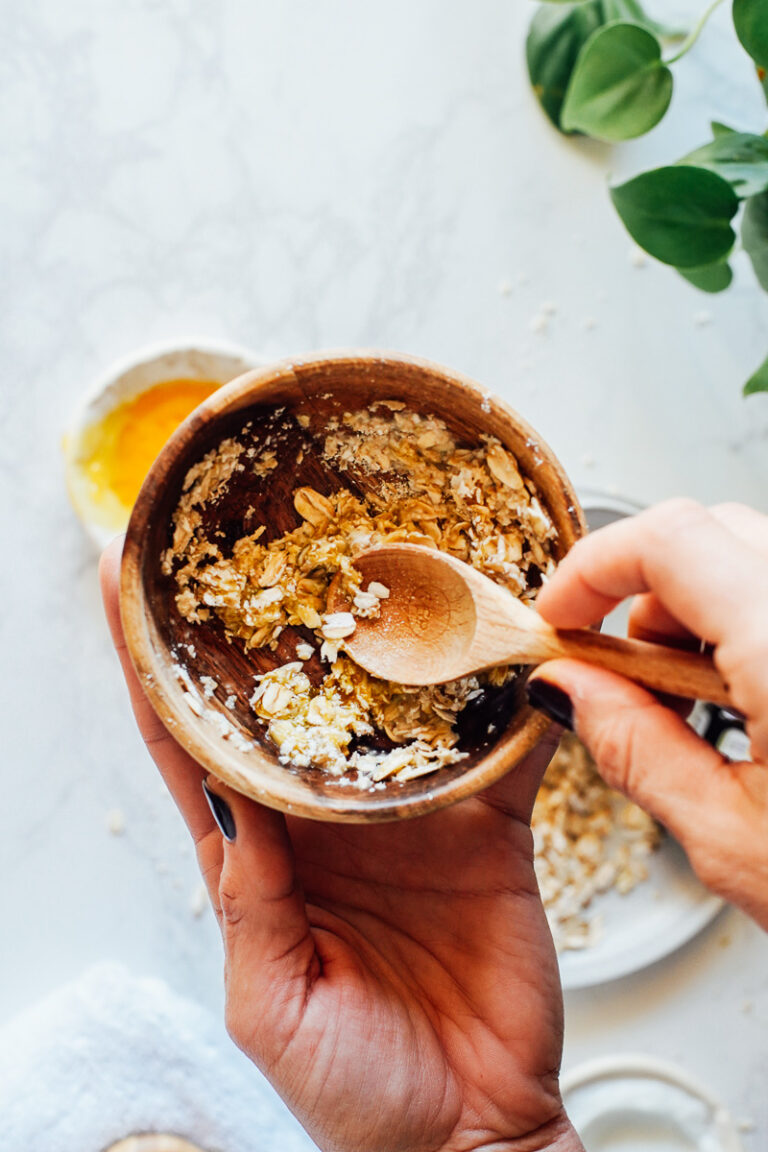
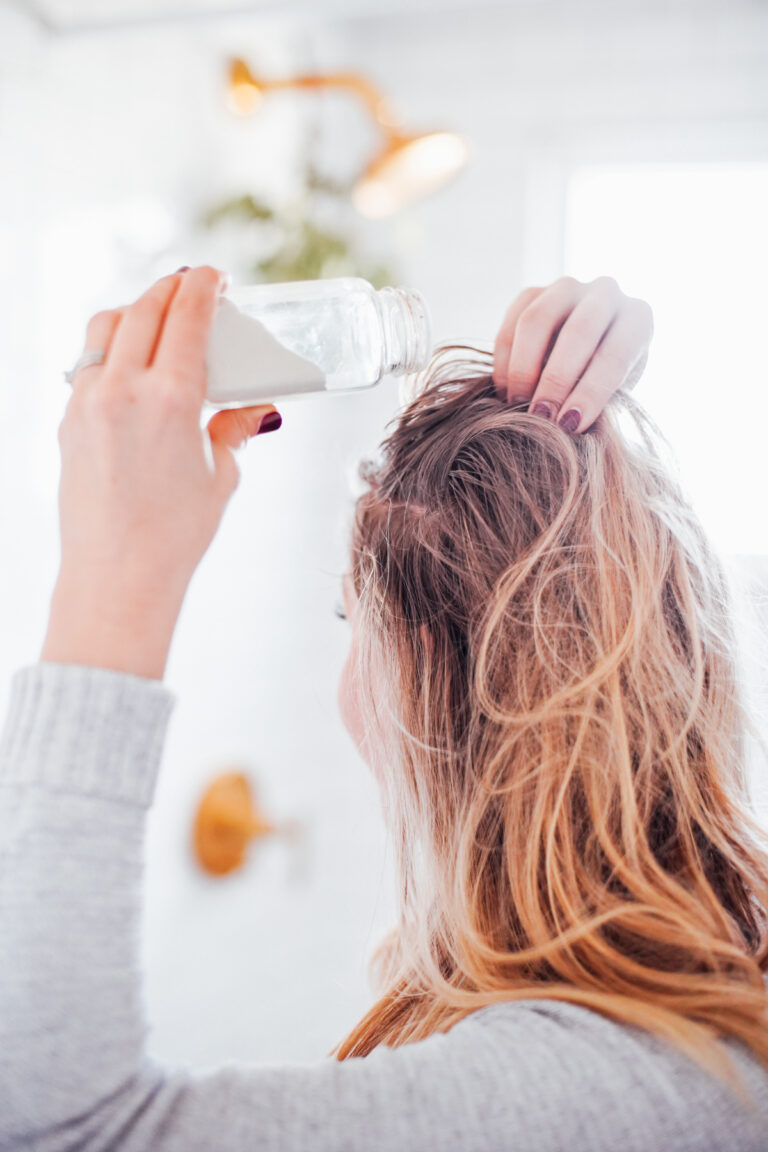
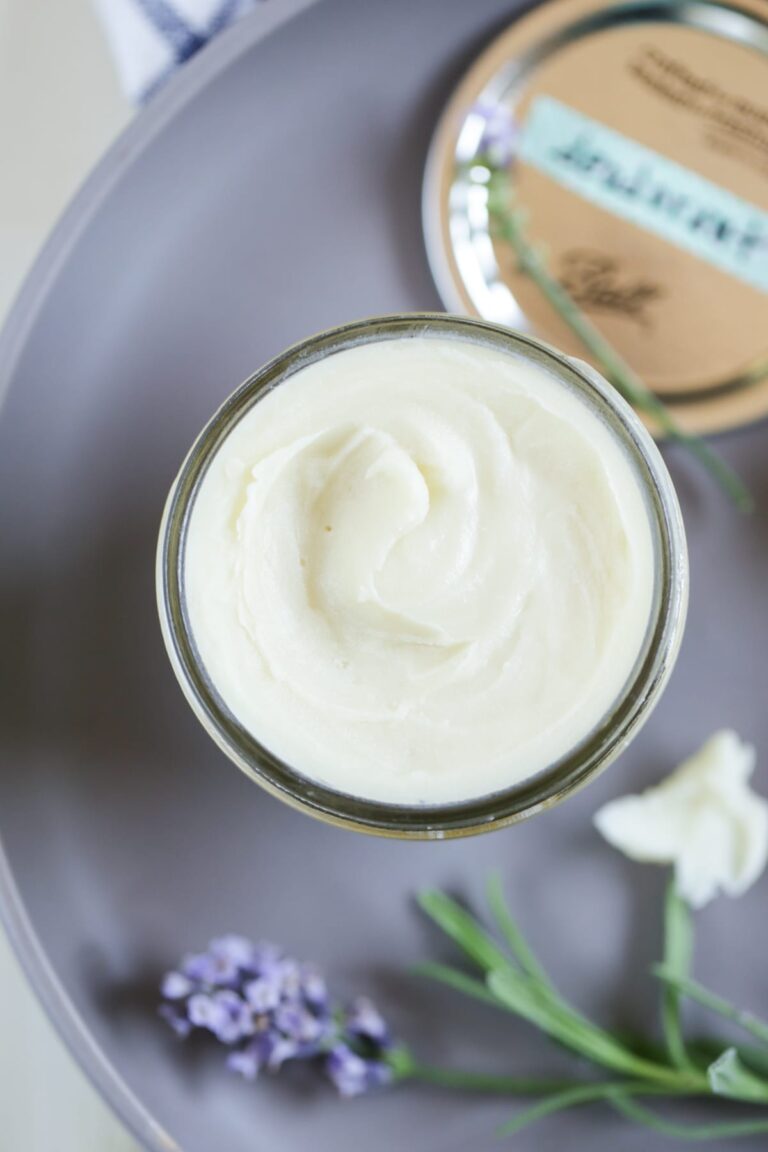
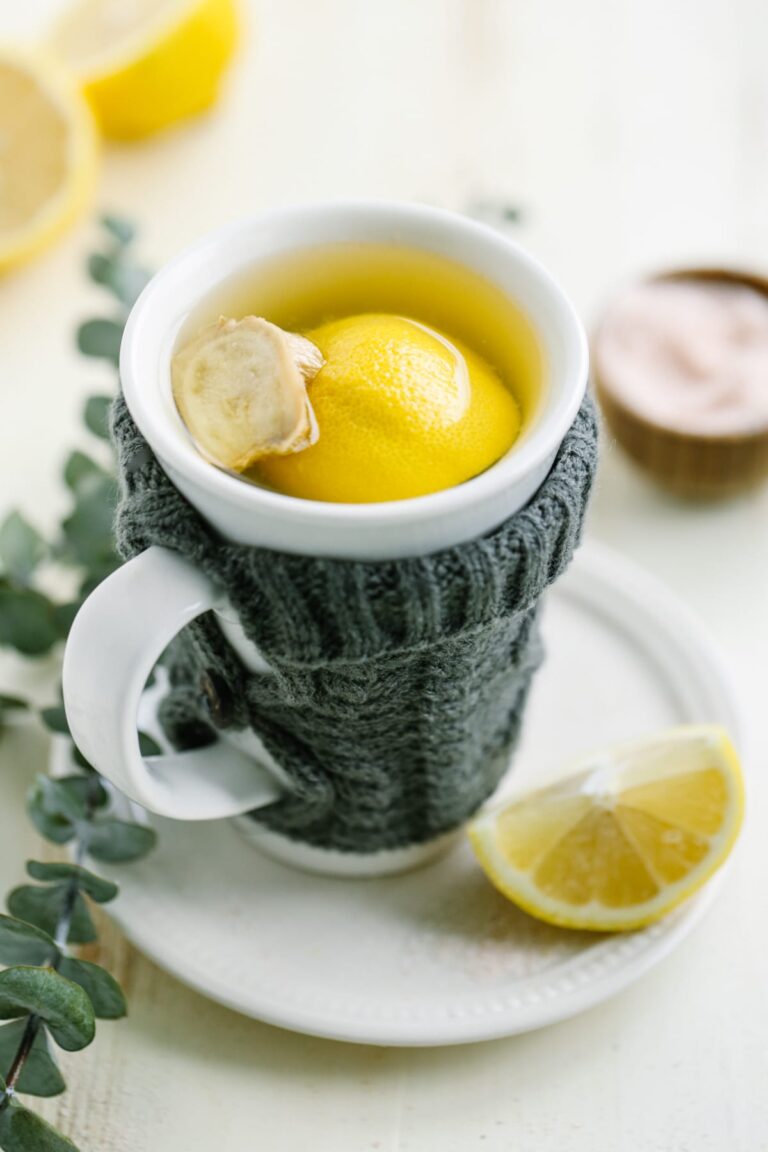
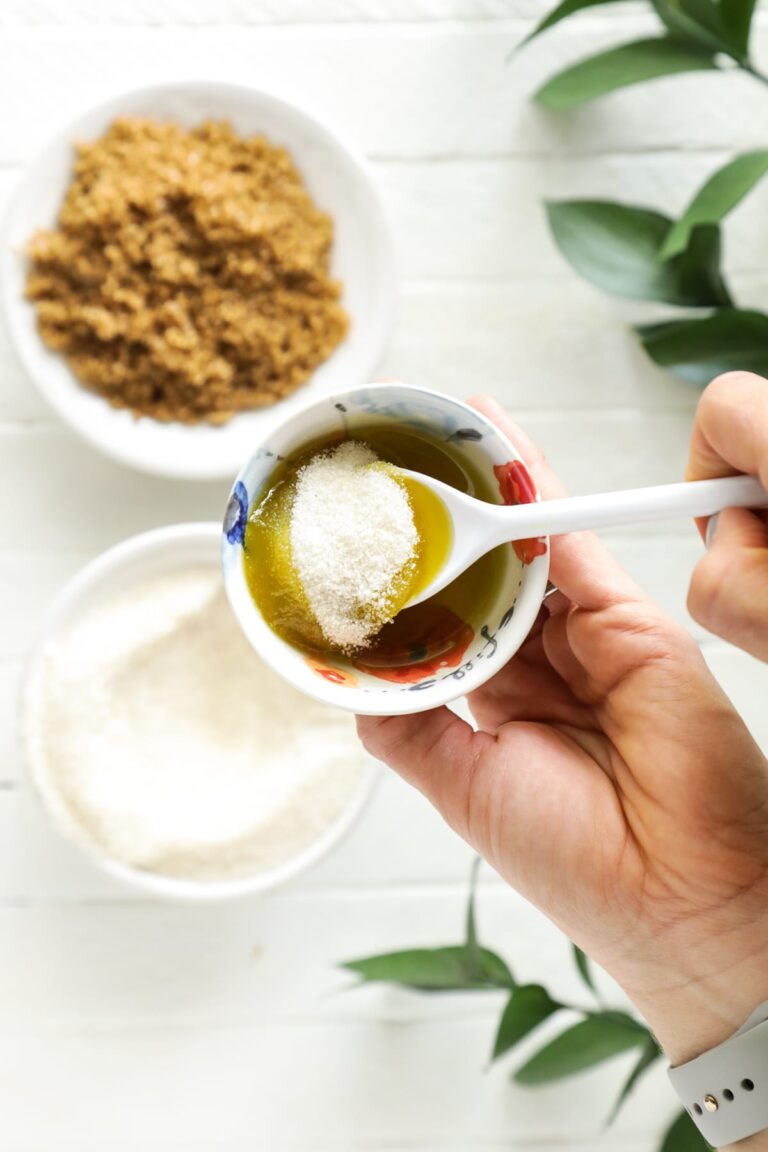
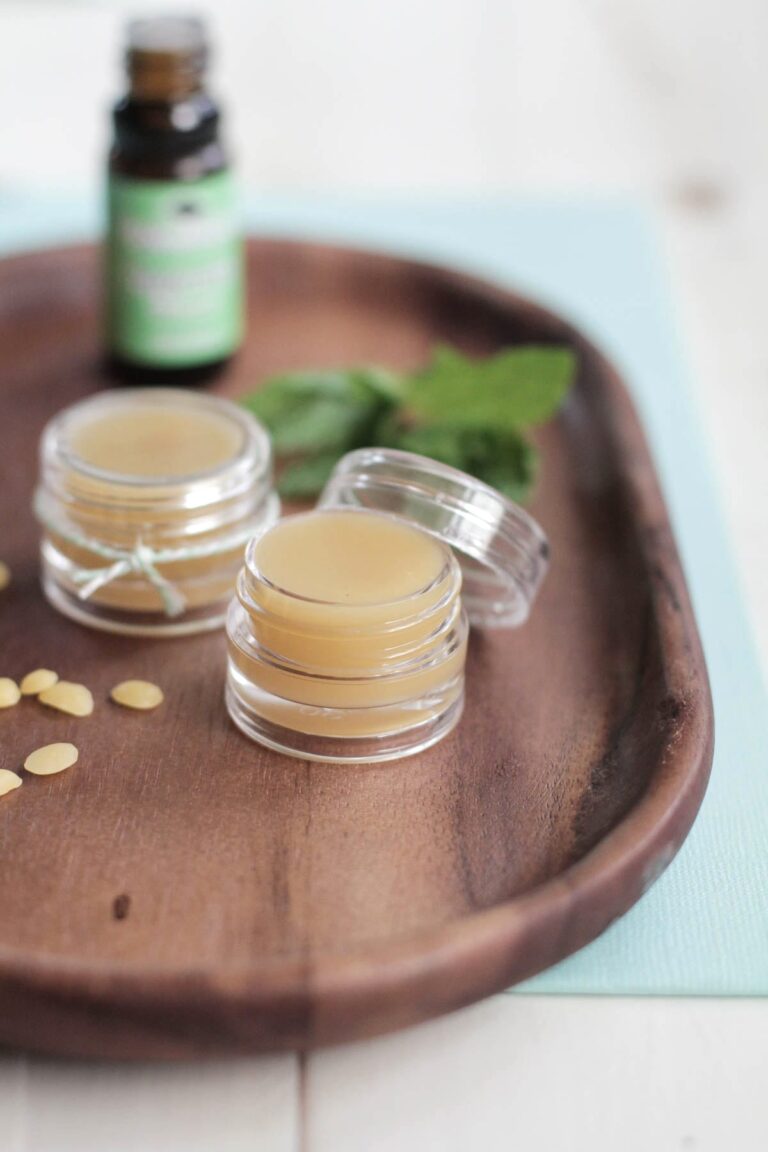
Let me know which face mask is your favorite!
The mask worked well for me. Thank you.
So glad to hear that, Marnus!
Hi
What is the shelf life on these masks? or is there not much due to water being added? i have been some dry sets on sale, and they advise you to add the water as you use it so stored with shelf life till the person wants to use it, then they add water? hope this make sence!
Thank you
1. Regarding bentonite clay mask recipes: do i have to use essential oil?
2. Can i make up enough for 3 or 4 uses? What is shelf life if i do?
Nice article its very helpfull thanks for sharing
Hi, can I substitute the bentonite clay with kaolin clay?
Thanks.
Hey Siam, Yes, you can. You’ll need to use more clay since bentonite absorbs so much of the liquid.
These are great recipes! I am currently trying the oatmeal & tea tree oil mask.. and I’m thinking maybe this would work good for hair as well? Would you recommend this on hair?
Sounds like such a great alternative to the pricey, store bought creams!
Thanks, Brandy!
I just recently went to Florida and got a sunburn from spending too much time in the sun. Which mask would you recommend for getting rid of it and how often should I use it? The burn is all over my body
Hey Jordan, I’d just apply fresh aloe vera to the areas.
You mentioned a few times not to use metal when working with Bentonite Clay. Why is that?
Great clay masks recipes, Kristin. My friends suggest me to try this kind of masks for my face. But I have not that much confident on that so I neglect their suggestions. Now, I thought why not to use it?.Yes, I decided to do that. Thank you for making me confident in using clay masks.
Enjoy, Juanita!
Hi! What do you recommend for the pores right under your eyes? Mine are clogged. I have had little success with exfoliating . Have used sugar scrubs, etc. Thanks!!
Hey Deborah, I’m not really sure. Maybe this mask: https://livesimply.me/2016/08/19/soothing-clay-mask-for-stubborn-breakouts-and-scars/? It’s really soothing, plus honey and aloe are amazing for breakouts/clogged pores. Or this mask: https://livesimply.me/2016/04/23/soothing-cleansing-face-mask/.
Hi Kristin ! loved your post cant wait to try !
Can you tell me how long is the shelf life? I feel like gifting it to my dear one, how long she can use this ? should we add any other oils or anything to have a good shelf life ?
Or these mask is only for one time use?
I am from India 🙂
Thoughts on what type of yogurt to use? Plain VS Greek? Does it matter much?
Hey Noel, It doesn’t matter as long as the yogurt contains the naturally-occurring probiotics–that’s what really helps :).